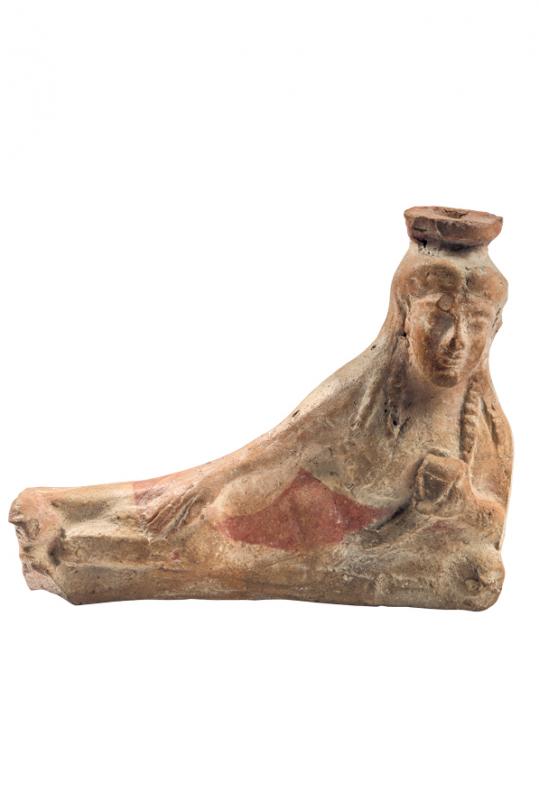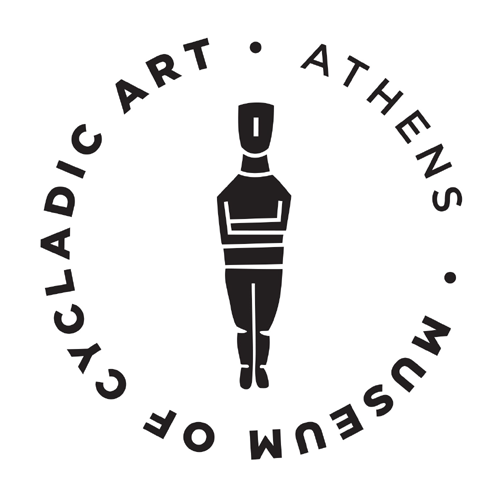
Anthropomorphic vase
Anthropomorphic vase
A vase in the shape of a reclining female figure whose left arm rests on a cushion and holds a rhyton (horn-shaped drinking vase). The mouth is in the form of a headdress (polos). The vase is mould-made and preserves ample remains of red pigment. Plastic or modelled vases already existed in earlier periods but their production became widespread around 700 BC, when the mould technique was introduced from the East. From the mid-7th to the late 6th c. BC vessels in the form of figurines were produced in large quantities and used as perfume flasks. Anthropomorphic and zoomorphic vases from various workshops (Corinthian, Laconian, Rhodian, Boeotian, and others) were exported to the entire Mediterranean and the Black Sea. They were used mainly as grave goods in cemeteries or as votive offerings in sanctuaries, although they are also found in domestic contexts. Corinth is considered one of the principal production centres of plastic vases, but the contribution of East Greece (with important workshops in Rhodes, Samos, Miletos and Ephesos) was notable too. The East Greek examples differ from their Corinthian counterparts in that they were made in two moulds, one for the front and one for the back of the vase. Each mould was lined with a thin layer of clay, which was removed as soon as it dried; then, the two sections were luted together with slurry, the join was covered and the mouth was attached.





